
Hi Archinect,
Last session of the day. John Todd, advised by Toshiko Mori.

4:30: JT: "We live in a post-utopian world...Meaning is not created from a transcendent source but emerges from around us [through an immanence]...
The idea of individual vs. collective is a false dialectic. We are not isolated subjects; we exist mostly outside ourselves. Tokyo is a city of "foam," in Peter Sloterdijk's terms; an aggregation of cells...
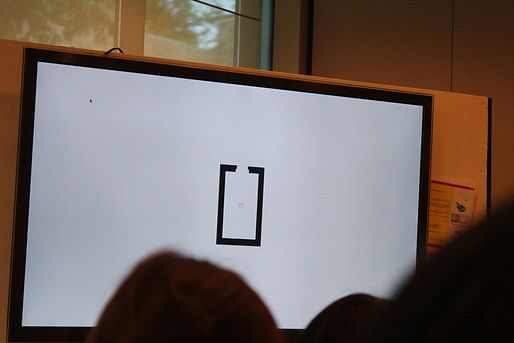
4:48: Mimi Hoang: The result is curiously that of a commune or enclave. ...Or can it sneak itself more insiduously into the urban form?
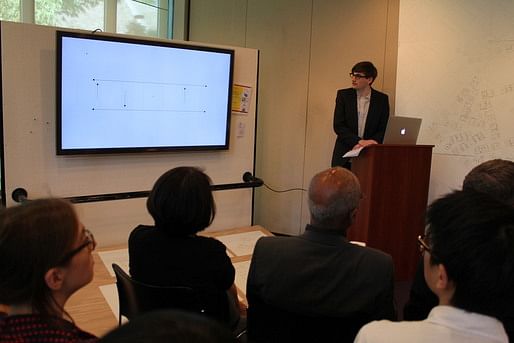
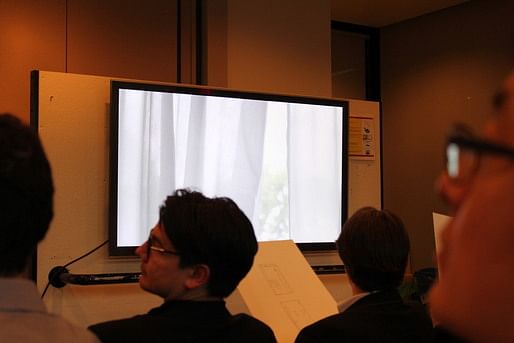
JT: The intent was that around its contexts, the buildings change in height in relation to its surroundings. The housing around it acts as a buffer between the inside--the public space you stumble upon--and the outside.
Emmanuel Petit: I think you haven't done Foam City, but Collage City...but a very formally interesting one at that.
JT: The idea wasn't just to replicate Sloterdijk's idea of a city...movement at the scale of the site and building, and the way you interact with individual spaces is how it ties together.
Michael Bell: Could you return to your use of the word immanence?
JT: ...that there's not a single perfect outcome....
MB: It's still a kind of collage city in that it's producing forms of difference, through the idea that there's a transmissability across that. I feel like you're extruding towards a kind of Deleuzian immanence, but...Deleuze's ideas are pretty difficult for architecture.

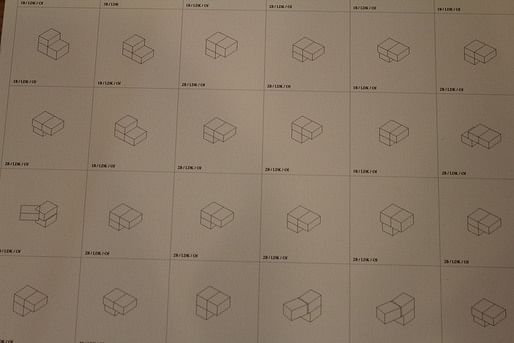
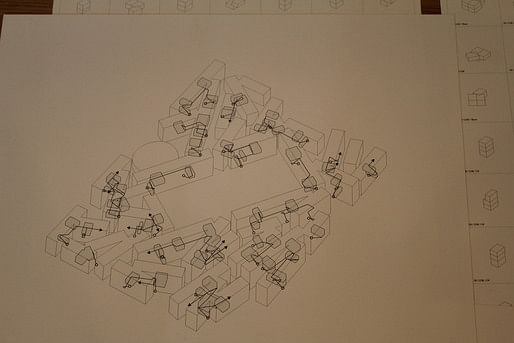
Diana Balmori: I'm bothered by two things. First, it's not clear where you can't get through, in cars or whatever. And two, the qualities of the spaces--one grand space and a whole series of small ones, which you've illustrated well in the photographs...they're very homogeneous in size. They're different in form but very homogeneous in size. But also, what Mimi brought up in how this is so separated.
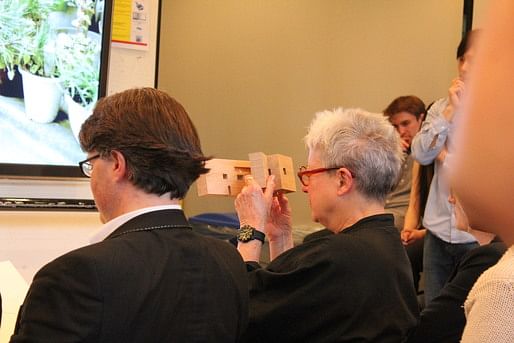
Maurice Cox: I'm intrigued about [where the car goes]...if that's how you understand the dense condition of this area... I actually think the uniformity of the spaces you've made are critical to hold this together as a form. It doesn't disaggregate and become a series of bar buildings--it acts like a mat. I'd be wary of a wider range of sizes in the spaces.
Before you showed the video, I thought this would be solid. In the video we see the transparency, and I'm wondering why you modeled it as such a solid.
JT: To me, the the transparency is in the video, because that's what happens at the scale of the alleyway. The models were to show the strategy of solids and voids--the punctures.
Toshiko Mori: It's a little unfortunate that it appears as an enclave, in the representation. But there are points where it intersects with other parts of the city; it appears that way better in [the figure-ground plan].

MC: Is there any room here for appropriation of public space? Like clotheslines? Or is it all outdoor space publicly accessible?
JT: Clotheslines would have been nice; I didn't have time for that.
MB: I'm not going to get into solar gains.
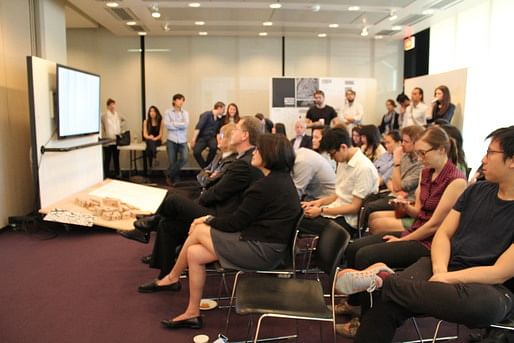
JT: I lived there last year; all the panes are single pane even though it does get slightly cold.
MB: Sejima has said she's not going to be able to do the kind of stuff she does anymore, that codes in Japan are going to catch up to her.
That othering between the outside and inside--you obviously want to break that down. It's a beautiful project and a pleasure to listen to your presentaiton. But it would be another thing to go into moisture and thermal...
JT: I think also with the transparency of this layer.
TM: Do you have--?
JT: No..
TM: Well, describe it. It's so beautiful.
JT: Toshiko is referring to a scene from Tokyo Story--they're sitting in their living room and someone walks by on the street. It's totally open, just with louvers. And the person on the street interjects themself into the conversation.
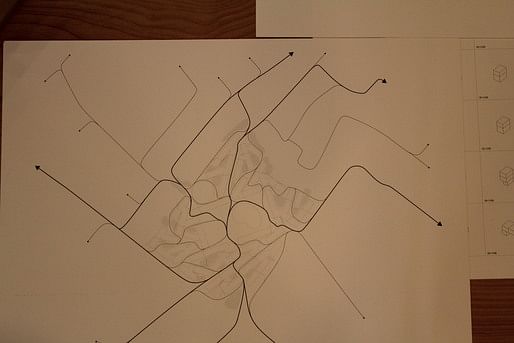
Jennifer Bonner: I want to commend you; you've done something that looks really simple, but it's not. There's no repetition of spaces.
EP: There's a strange schizophrenia. On one hand you appear like an Enlightenment philosopher, saying that "there might not be a veil..." But then there was the confusion--talk of the death of god and the consolidation of our knowledge. The glass isn't used as a transparency device but it reflects; it makes the view slightly opaque and complicated. I don't understand how these two aspects come together?
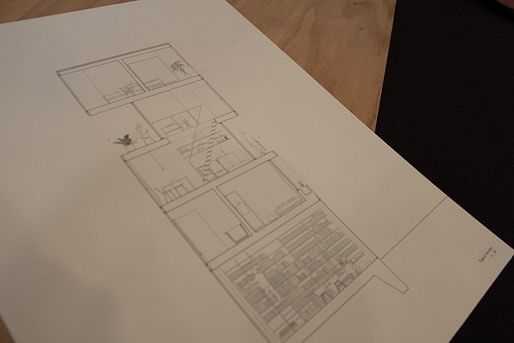
JT: The absoluteness of the courtyard in the center is only achieved in the context of something that is different from it in its surroundings. If this were New York I would not do this kind of courtyard.
MB: When you describe it as coming from Tokyo, I can feel something of that; but on the other hand, I feel like you're pulling it out of Tokyo. ...I don't know if you've studied with Sanford Kwinter while you're here, but he's been trying to teach students to give up on transcendence and work on immanence. This is...very convincing in terms of Japan, and frankly Sanford was always pointing towards Buddhism. I think there are two theses here, and they're both very impressive, but I think that you slip into saying that "it's Tokyo" to avoid some questions.
TM: His project is mostly in shadow; you can see through it, because there's no reflection. ...It's more spatial.
TM: This does look like a bar building, but there are also typological inventions in a very subtle, detailed manner--which is also another book to be produced. So there is a lot of work resulting from your precise analysis.

MB: It's intellectually ambitious and materially and in every other way, wonderful.
End. Applause.
Thanks for reading!
Lian
This blog was most active from 2009-2013. Writing about my experiences and life at Harvard GSD started out as a way for me to process my experiences as an M.Arch.I student, and evolved into a record of the intellectual and cultural life of the Cambridge architecture (and to a lesser extent, design/technology) community, through live-blogs. These days, I work as a data storyteller (and blogger at Littldata.com) in San Francisco, and still post here once in a while.



1 Comment
I really liked reading the script of this project. Is there anyway to find out more information? Is the GSD required to do a thesis-prep book? Is his work uploaded online somewhere?
Block this user
Are you sure you want to block this user and hide all related comments throughout the site?
Archinect
This is your first comment on Archinect. Your comment will be visible once approved.